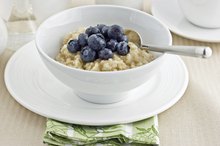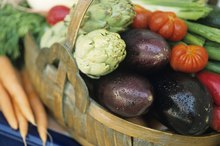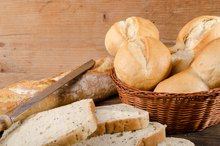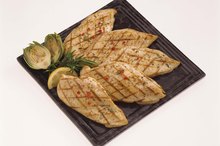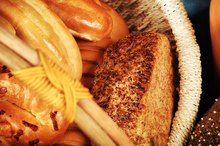A Gluten-Free Low-Residue Diet
A gluten-free diet is tough enough to adhere to on its own; having to also restrict your fiber intake on a low-residue diet can seem overwhelming. However, when you limit your fiber intake, you naturally cut out many gluten-containing foods, which makes your new diet just a little bit easier to follow. Knowing which foods are high fiber and which foods may contain hidden gluten is the first step in planning your diet. Always get your doctor's consent before beginning this type of eating plan.
Low-Residue Basics
Your doctor may have advised you to follow a low-residue diet if you have certain inflammatory bowel conditions such as Crohn's disease or ulcerative colitis, or if you've just undergone intestinal surgery or colostomy. In these cases, it may be hard for your digestive system to process fiber, the indigestible part of plant foods. Restricting your intake of fiber will help control your symptoms and help you heal.
Gluten-Free Low-Down
Does Old-Fashioned Oatmeal Contain Gluten?
Learn More
People with celiac disease or a gluten sensitivity need to avoid foods that contain the gluten protein found in wheat, barley and rye 3. In the case of celiac disease, eating gluten can cause:
- damage to the small intestine resulting in weight loss
- bloating
- abdominal cramping
- gas
- nutrient deficiencies
A sensitivity does not cause damage to the intestine, but individuals may experience the same digestive discomfort as those with celiac disease. They may also have non-GI symptoms such as headache, "foggy mind" and joint pain.
What You Can Eat on a Low-Residue Diet
Foods you choose for your low-residue diet should be soft in nature, which is indicative of their lower fiber content 1. You can eat all milk products, including yogurt and cottage cheese. Remove the skin from potatoes and the seeds from squash. Eat fruit that has been canned except for pineapple; you can also have ripe bananas and melon. Breads and cereals should be made from refined grains, such as white rice.
- Foods you choose for your low-residue diet should be soft in nature, which is indicative of their lower fiber content 1.
- Breads and cereals should be made from refined grains, such as white rice.
Foods For a Gluten-Free Diet
Wheat-Free Meal Plans
Learn More
Gluten-free dieters need to avoid all potential sources of gluten. Of course, this includes wheat, rye and barley, and anything made with those grains, such as:
- many breads
- cereals
Also avoid oats, which are often cross-contaminated during processing, unless they are labeled gluten-free.
Putting It All Together
The major areas in which you'll have to use caution on this diet are in the breads and cereals category. Your choices will be very limited. Stick to refined-grain products such as white rice and pasta made from white rice. Choose breads made from refined flours and starches that don't contain gluten, such as white rice and potato flours and corn and tapioca starches.
- The major areas in which you'll have to use caution on this diet are in the breads and cereals category.
- Choose breads made from refined flours and starches that don't contain gluten, such as white rice and potato flours and corn and tapioca starches.
Related Articles
References
- Digestive Disease Center of the Hudson Valley: Low Fiber Low Residue
- Jackson-Seiglebaum Gastroenterology: Gluten-Free Diet
- National Foundation for Celiac Awareness: What is Non-Celiac Gluten Sensitivity?
- MindBodyGreen: 10 Unexpected Gluten Culprits in Common Foods
- National Foundation for Celiac Awareness: The Gluten-Free Diet
- Today's Dietitian: Gluten-Free Whole Grains — Choosing the Best Options While on a Gluten-Free Diet
- Ye, E. Q., Chacko, S. A., Chou, E. L., Kugizaki, M., & Liu, S. (2012). Greater whole-grain intake is associated with lower risk of type 2 diabetes, cardiovascular disease, and weight gain. The Journal of Nutrition, 142(7), 1304-1313.
- Bizzaro, N., Tozzoli, R., Villalta, D., Fabris, M., & Tonutti, E. (2012). Cutting-edge issues in celiac disease and in gluten intolerance. Clinical Reviews in Allergy & Immunology, 42(3), 279-287.
Writer Bio
Jody Braverman is a professional writer and editor based in Atlanta, GA. She received a Bachelor of Arts in English from the University of Maryland, and she is a certified personal trainer, fitness nutrition specialist, and yoga teacher. She has written for various online and print publications, including Livestrong.com, SFGate, Healthfully, and Chron.com. Visit the writer at www.JodyBraverman.com.
